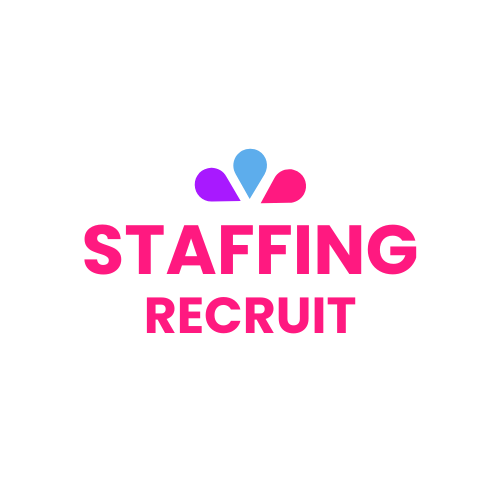Introduction
The healthcare industry is currently facing staffing challenges like never before, pushing organisations to find new and creative ways to hire. One solution that is gaining popularity is virtual hiring, which is completely changing the way medical facilities find, evaluate, and onboard skilled professionals.
This shift towards digital recruitment in healthcare uses advanced technologies to make the hiring process smooth and efficient:
- Video interviews allow hiring managers to connect with candidates from anywhere in the world
- Digital assessments enable remote evaluation of clinical skills
- Virtual onboarding platforms make it easier to integrate new team members into the organisation
But the benefits of virtual hiring go beyond just filling open positions. Healthcare organisations that have embraced these digital solutions are seeing positive results such as:
- Quicker hiring processes
- Lower costs associated with recruitment
- Access to a larger pool of qualified candidates
- Better experience for candidates throughout the hiring process
- Higher retention rates among employees
As healthcare facilities work to meet the changing needs of their workforce, virtual hiring has become an essential tool for building strong teams while still running smoothly. This strategic approach allows organisations to efficiently find and secure top talent, ensuring that they can continue providing excellent care to their patients.
The Current Healthcare Staffing Crisis
The healthcare industry is currently facing a staffing crisis that threatens patient care across the United States. According to recent data from the American Hospital Association, hospitals nationwide are struggling with vacancy rates exceeding 15% for nursing positions.
Critical Nursing Shortages
The severity of this crisis is evident in several ways:
- 1 in 5 healthcare workers have left their positions since 2020
- 34% of nurses plan to leave their roles by the end of 2023
- Rural hospitals report vacancy rates as high as 25%
Physician Burnout Impact
The impact of physician burnout is also significant:
- 47% of physicians report symptoms of burnout
- Specialist positions remain unfilled for an average of 150 days
- It costs an average of $250,000 to replace a single physician
The financial implications of these staffing challenges are straining healthcare organisations. Labor costs have increased by 25% per patient compared to pre-2020 levels, with contract labor expenses rising by 195% for the average hospital.
Healthcare facilities are resorting to temporary staffing solutions at high rates, creating unsustainable financial burdens. A single travel nurse can cost up to three times more than a permanent staff member, putting further strain on already tight budgets.
The effects of these challenges go beyond just staffing numbers. Patient wait times have increased by 33%, and in 75% of facilities, the ratio of staff to patients has worsened. This creates a cycle where remaining staff have heavier workloads, leading to higher turnover rates and compromised quality of care.
The aging healthcare workforce adds another layer to these challenges. With 20% of registered nurses nearing retirement age within five years, healthcare organisations need to find innovative solutions to address this growing crisis.
Embracing Virtual Hiring: A Game Changer for Healthcare Organisations
Virtual hiring is changing the way healthcare organisations recruit. Instead of relying solely on in-person interviews and traditional methods, they are now embracing digital solutions that make the entire hiring process more efficient and effective.
This innovative approach includes:
- Video Interviews: Real-time or pre-recorded interviews allowing candidates to showcase their skills and personality
- Digital Skill Assessments: Online platforms measuring clinical knowledge and competencies
- Virtual Job Fairs: Digital events connecting multiple candidates with healthcare employers
- Automated Reference Checks: Digital systems collecting and verifying professional references
- Electronic Documentation: Secure platforms for credential verification and licensure validation
Breaking Geographical Barriers
One of the biggest advantages of virtual hiring is its ability to overcome geographical limitations. Healthcare organisations can now reach out to potential candidates who may have been previously overlooked due to distance.
With virtual hiring, healthcare organisations can access talent from:
- Rural areas that were difficult to reach before
- Different time sones and regions
- International markets with qualified healthcare professionals
- Remote working professionals looking for flexible work arrangements
This wider reach not only increases the diversity of candidate pools but also helps fill specialised positions faster than traditional recruitment methods.
Streamlined Digital Onboarding
In addition to improving the hiring process, technology is also being used to streamline onboarding for new hires.
Modern healthcare organisations are leveraging various digital tools to ensure a smooth transition for new employees:
Digital Learning Management Systems
- Self-paced orientation modules
- Virtual reality clinical simulations
- Interactive policy and procedure training
- Remote compliance certification
Smart Documentation Processing
- Electronic signature capabilities
- Automated background check systems
- Digital benefits enrollment
- Cloud-based document storage
By implementing these digital onboarding practices, healthcare facilities have reported significant reductions in time-to-hire compared to traditional methods. This means that new hires can start their patient care duties sooner, leading to improved productivity within departments and better delivery of patient care services.
Furthermore, remote candidates appreciate the flexibility of being able to complete pre-employment requirements from the comfort of their own homes. This has resulted in higher acceptance rates and increased engagement during the onboarding process, ultimately setting a positive tone for long-term retention.
Enhancing Recruitment Strategies with Workforce Solutions and Analytics
Healthcare organisations are changing the way they hire by using data-driven workforce solutions. Companies like Visient are leading this change by providing comprehensive analytics platforms that help optimise staffing decisions and improve recruitment outcomes.
How Workforce Solutions Are Changing Recruitment
These workforce solutions offer valuable insights through various methods:
1. Real-time Market Analysis
- Salary benchmarking data
- Regional staffing trends
- Competitor hiring patterns
2. Predictive Analytics
- Anticipated staffing needs
- Turnover risk assessment
- Peak demand forecasting
Performance analytics play a crucial role in strategic recruitment by identifying patterns in successful hires and highlighting areas that need improvement. Healthcare organisations can track important metrics such as:
- Time-to-fill positions
- Cost-per-hire
- Candidate source effectiveness
- New hire retention rates
The Power of Advanced Matching Techniques
Advanced workforce solutions go a step further by integrating machine learning algorithms to match candidate profiles with specific departmental needs. This precision matching takes into account various factors such as:
- Clinical expertise requirements
- Shift preferences
- Cultural fit indicators
- Professional development goals
The Impact of Analytical Tools on Recruitment
Organisations that have implemented these analytical tools are seeing significant improvements in their recruitment processes:
- 40% reduction in recruitment cycle time
- 25% decrease in hiring costs
- 35% improvement in candidate quality
- 30% increase in retention rates
The Benefits of Data-Driven Recruitment Strategies
Healthcare providers who adopt data-driven recruitment strategies gain a competitive edge over others. By using analytics, they can enhance candidate screening accuracy and allocate resources more effectively. This leads to better hiring decisions and ultimately, improved patient care.
These technological solutions also bring benefits to HR teams. With automation handling routine tasks, HR professionals can focus on high-value activities such as building relationships with candidates and developing employer branding strategies. This creates a more efficient hiring ecosystem where both candidates and employers thrive.
Moreover, the advent of digital job matching platforms has further revolutionised the recruitment landscape. These platforms leverage advanced algorithms to streamline the hiring process, ensuring that the right candidates are matched with the right job roles swiftly and efficiently.
Innovative Care Delivery Models Supported by Virtual Hiring Practices
The healthcare industry needs flexible staffing solutions that meet the needs of today’s patients. The Nurse Staffing Task Force is pushing for new care delivery models that combine virtual capabilities with traditional healthcare services. These models create a hybrid approach where:
- Remote nursing support for documentation and patient monitoring
- Virtual care coordination teams
- Telehealth-enabled patient consultations
- Digital health coaching and education programs
Healthcare organisations that are using these new models say they have seen up to 30% improvement in nurse-to-patient ratios and better quality of care.
Flexible Work Environments: The New Standard
Virtual hiring practices allow healthcare facilities to create flexible staffing structures that can accommodate:
- Split shifts between remote and on-site work
- Floating nurse pools across multiple facilities
- Cross-trained staff deployment
- On-demand scheduling options
The use of flexible work arrangements has shown positive results:
- 25% reduction in nurse burnout rates
- Improved work-life balance satisfaction scores
- Higher retention rates among nursing staff
- Enhanced coverage during peak demand periods
These flexible models are especially beneficial for specialised units where staffing problems are most severe. Virtual hiring platforms help healthcare organisations find and hire professionals who can easily move between different care delivery settings.
Healthcare facilities that are leading the way with these approaches are seeing significant improvements in staff satisfaction and operational efficiency. One notable example is a regional healthcare network that reduced its vacancy rates by 40% through implementing flexible scheduling options made possible by virtual hiring practices.
Addressing Burnout and Improving Job Satisfaction through Effective Staffing Strategies
Strategic workforce management directly impacts nurse burnout rates and job satisfaction levels. Research shows that healthcare facilities with appropriate nurse-to-patient ratios report:
- 41% lower burnout rates
- 48% higher job satisfaction scores
- 33% reduction in medical errors
- 27% decrease in staff turnover
Virtual hiring practices enable healthcare organisations to maintain optimal staffing levels by quickly filling gaps and ensuring balanced workloads. This proactive approach prevents the common cycle of understaffing → burnout → resignations → increased pressure on remaining staff.
The implementation of strategic staffing solutions creates a positive ripple effect:
- Manageable patient assignments
- Regular breaks and time off
- Reduced overtime requirements
- Enhanced Professional Development
- Dedicated time for training
- Mentorship opportunities
- Career advancement pathways
Healthcare organisations that prioritise staff well-being through effective staffing strategies report significant improvements in workplace culture. A study by the American Nurses Association reveals that facilities with robust staffing management systems experience:
“A 65% increase in staff engagement and a 73% improvement in reported job satisfaction when compared to facilities without structured staffing strategies.”
Virtual hiring tools enable healthcare organisations to build resilient teams by matching candidates with positions that align with their skills and preferences. This targeted approach results in stronger team dynamics and improved staff retention rates, creating a sustainable foundation for high-quality patient care.
Conclusion
Virtual hiring is changing the game in healthcare staffing. It’s making operations more efficient and creating a sustainable future for medical organisations. With digital recruitment processes like video interviews and remote onboarding, traditional staffing methods are being redefined.
The impact of virtual hiring goes beyond just filling positions:
- Access to More Talent: Healthcare organisations can now hire qualified professionals from anywhere in the world.
- Smoother Operations: Digital processes make hiring faster and reduce administrative tasks.
- Better Work Culture: Remote work options create flexible environments that attract top talent.
The healthcare industry’s embrace of virtual hiring practices shows that this shift in workforce management is here to stay. It gives organisations the power to build strong teams, maintain optimal staffing levels, and provide excellent patient care. As the healthcare industry continues to evolve, virtual hiring will remain an essential tool for creating efficient, adaptable, and thriving medical environments that benefit both healthcare professionals and the communities they serve.

